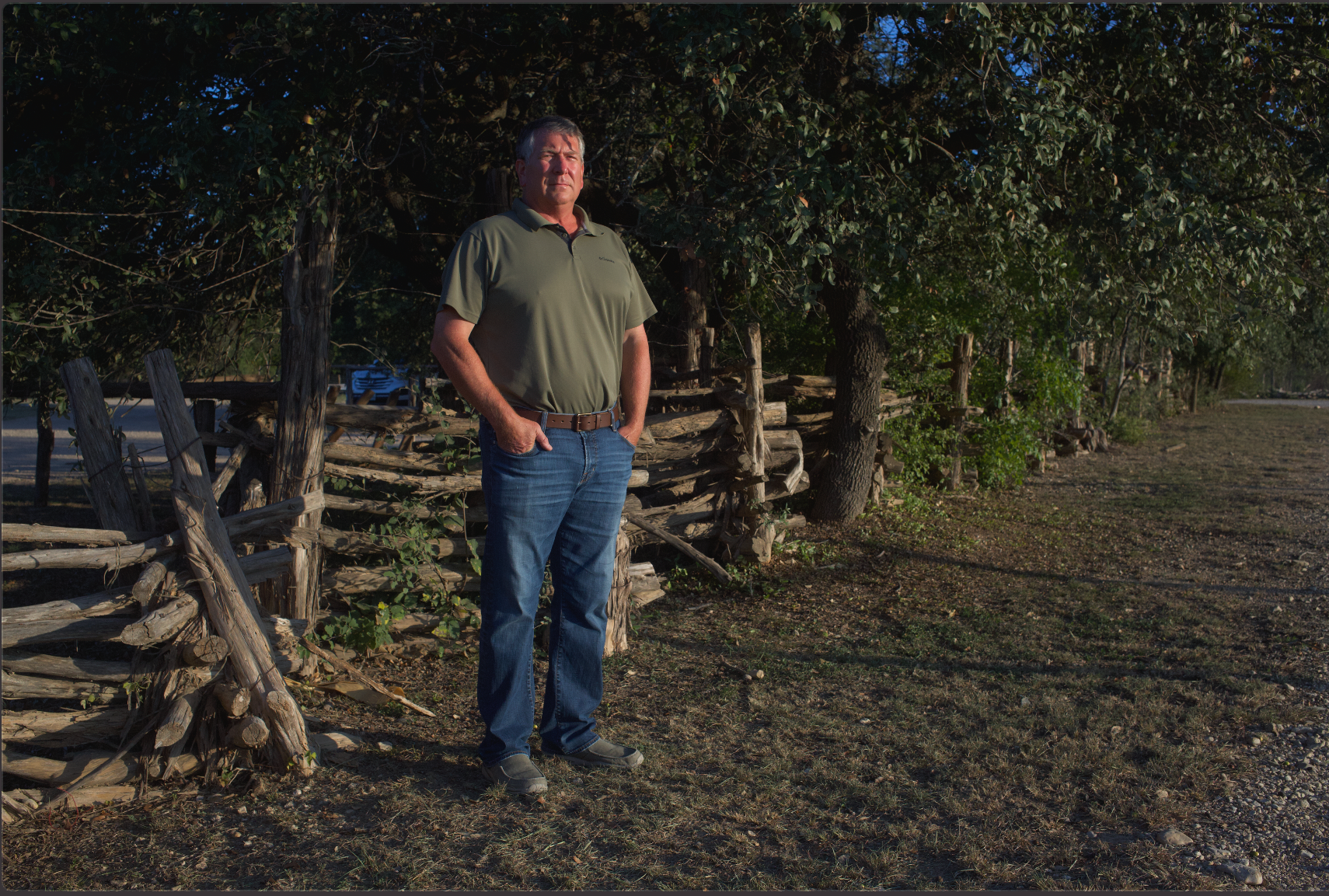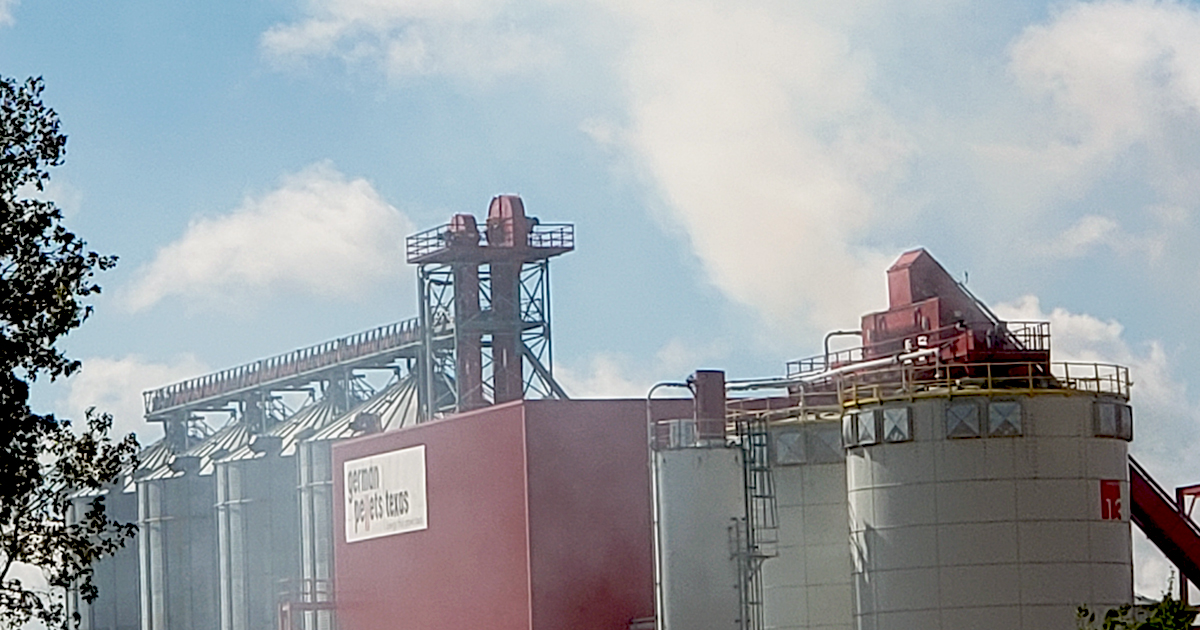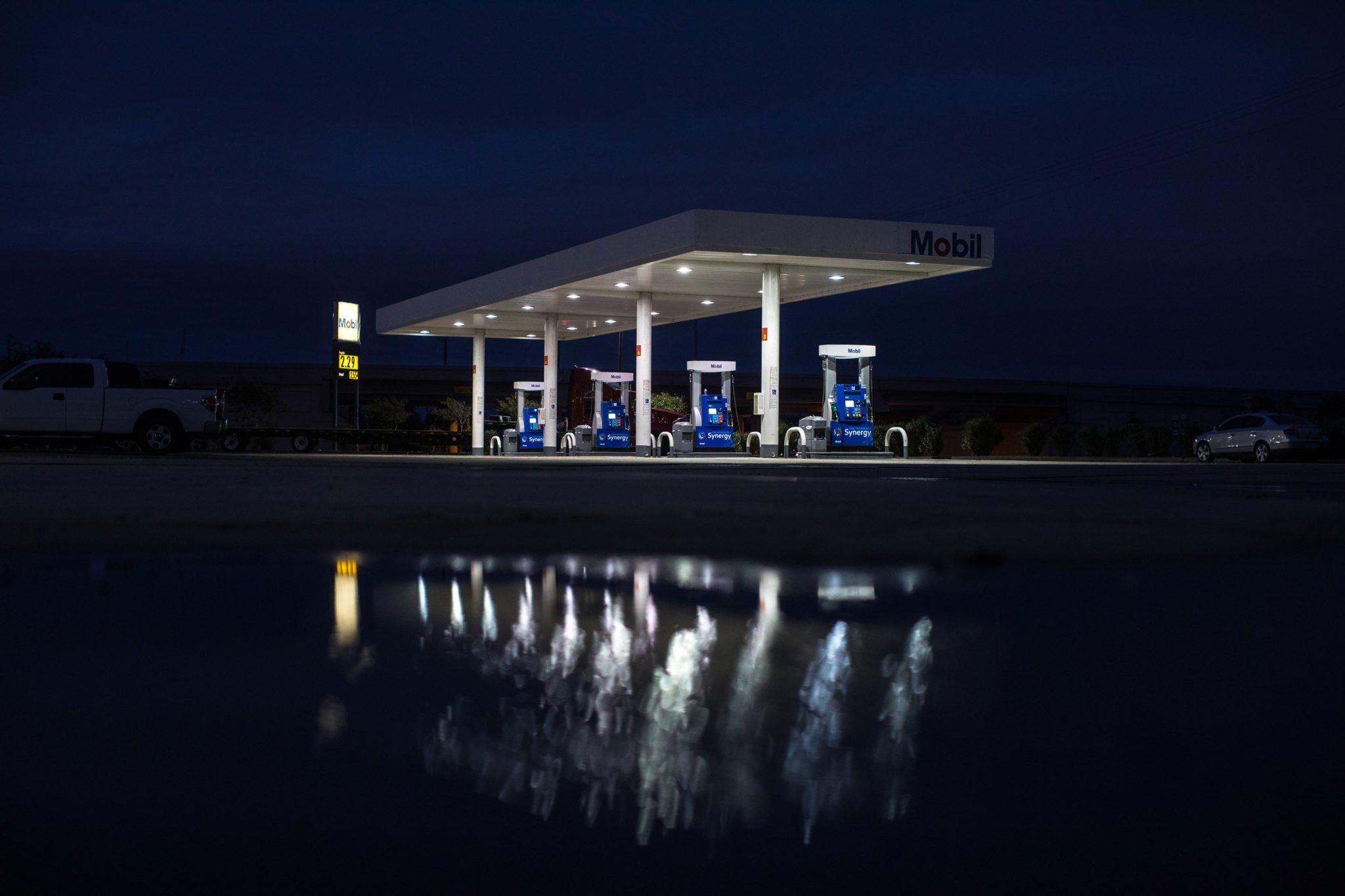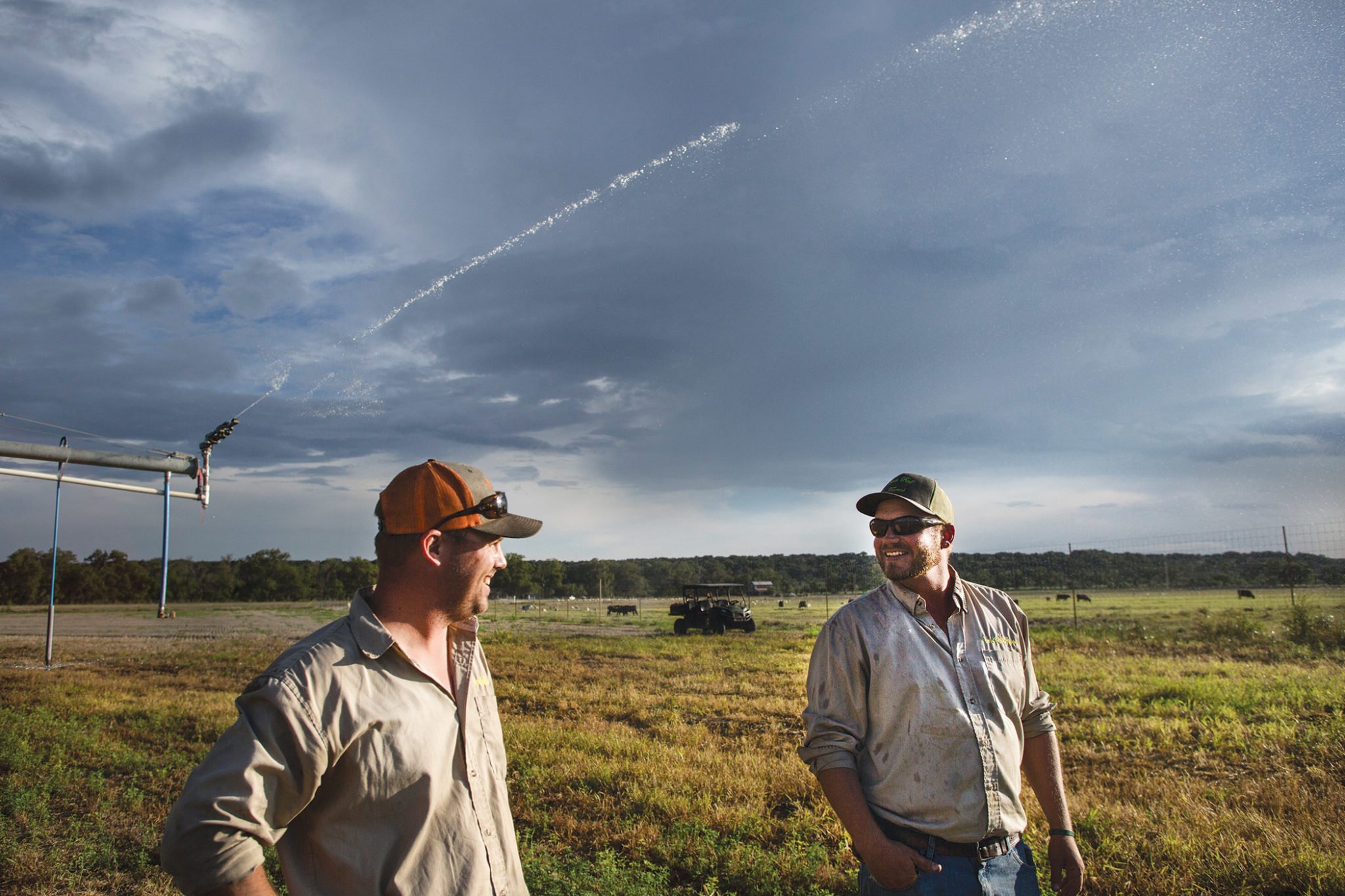
How To Disappear a River
A 40-mile stretch of the San Saba River keeps drying up, and some locals say illegal pumping is to blame. Why hasn't the state done more?
A version of this story ran in the October 2017 issue.
How To Disappear a River
A 40-mile stretch of the San Saba River keeps drying up, and some locals say illegal pumping is to blame. Why hasn’t the state done more?
by Naveena Sadasivam
October 30, 2017
John Quinn says the trouble started in 2011. Texas endured one of its worst droughts ever that year, with blistering temperatures and parched conditions leading to devastating wildfires and $7 billion in agricultural losses. Quinn is a third-generation cattle rancher in the small town of Brady, about two hours northwest of San Antonio, and his business took a big hit. With no rain, the grass on Quinn’s land soon turned brown and died, leaving his Angus heifers with nothing to eat. He was forced to sell off the whole herd.
“It was pretty disheartening,” Quinn recalled. “It was very hard to sell, but I just did it anyway. I hate to see livestock suffer, so I just got rid of them.”
Not long after, he noticed something strange: The ranch belonging to his close friend and pastor, Rusty Allen, still had hundreds of acres of bright-green grass. Every Sunday morning, Quinn and his wife drove to church at Allen’s ranch in nearby Menard, a half-hour southwest of Brady. On those weekly drives, Quinn couldn’t help staring at Allen’s lush fields. He wondered: Could his friend be illegally pumping water from the San Saba River?
Menard and Brady are agricultural communities that depend heavily on the San Saba, a gentle, winding tributary of the Colorado River. But that summer, the San Saba ran dry for a 40-mile stretch between Menard and Brady. Bass, bluegill and rare mussels were among the many aquatic species that vanished along with the water. Mesquite, pecan and hundred-year-old bur oak trees along the banks fried to a crisp, too. Quinn had assumed the drought was entirely to blame, but now he wondered if his friends and neighbors might be stealing water. He called the Texas Commission on Environmental Quality (TCEQ), the state agency that regulates surface water, and filed a complaint.
That call led to a chain of events that would end Quinn and Allen’s friendship. The two men found themselves on opposing sides of a contentious struggle that pitted the people of Menard and Brady against each other. At the crux of the fight is whether irrigators like Allen in Menard are taking more than their fair share of water from the San Saba. The river dried up between Menard and Brady every summer from 2011 to 2015, and the people of Brady say illegal pumping is a major reason why. Quinn and other landowners in Brady, who’ve formed the nonprofit Friends of the San Saba, charge that Menard farmers are drilling shallow wells on their property close to the river and unlawfully extracting water from the San Saba, a state resource that downstream landowners also have a right to. That, in turn, is forcing them to depend on groundwater to water their livestock and is devaluing their property, they say.
Though it’s difficult to estimate the exact number of wells currently drawing from the river, Menard farmers have drilled dozens of shallow wells on the banks of the San Saba. Since 2011, TCEQ has conducted several investigations into those wells, and in a handful of cases, including on Allen’s property, the agency concluded that the wells are indeed illegally drawing from the river. But those investigations haven’t led to any fines or legal consequences for the farmers — a major source of frustration for Friends of the San Saba.
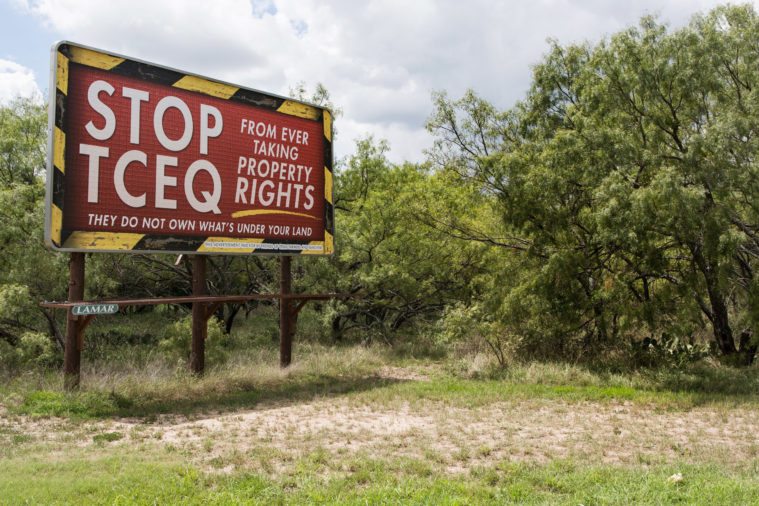
Allen and his neighbors argue that TCEQ has done little to prove scientifically that the wells are connected to the river. They believe the agency’s findings are meant to placate Friends of the San Saba, a group they say is interested in protecting the river, not for environmental reasons, but to safeguard their property values. Quinn, for instance, has posted his 5,000-acre ranch for sale for $25 million, a price he’s unlikely to get if his scenic river view is replaced with sun-baked rocks and dead fish.
TCEQ is under fire from both sides, but as the state agency in charge of administering surface water rights, it has the power to settle the dispute. As Texas grows and climate change exacerbates droughts, fights over surface water have become increasingly bitter. Though the San Saba is a small stream that flows through a sparsely populated region, how the agency handles the water woes there may be an indicator of whether it’s equipped to sort out disputes in other river basins.
The agency’s own policies seem to handicap it from effectively managing rivers. For one, TCEQ doesn’t require meters on pumps, so it has no way to prove that a landowner has been over-pumping. In some basins, including the San Saba, the agency has also given out permits allowing more pumping than there is water in the river during times of drought; if everyone with the legal right to withdraw did so, the San Saba would simply disappear. And its strategy to police over-pumping is entirely complaint-driven. If no one complains of overuse, TCEQ doesn’t investigate. Most appalling to some folks in Brady: TCEQ has found what it characterizes as illegal pumping but has done nothing to stop it.
“TCEQ needs to do more,” Quinn said. “They’re the law to oversee the water. It’s a big resource and there’s not much of it. It’s their responsibility to step up and solve the problem.”
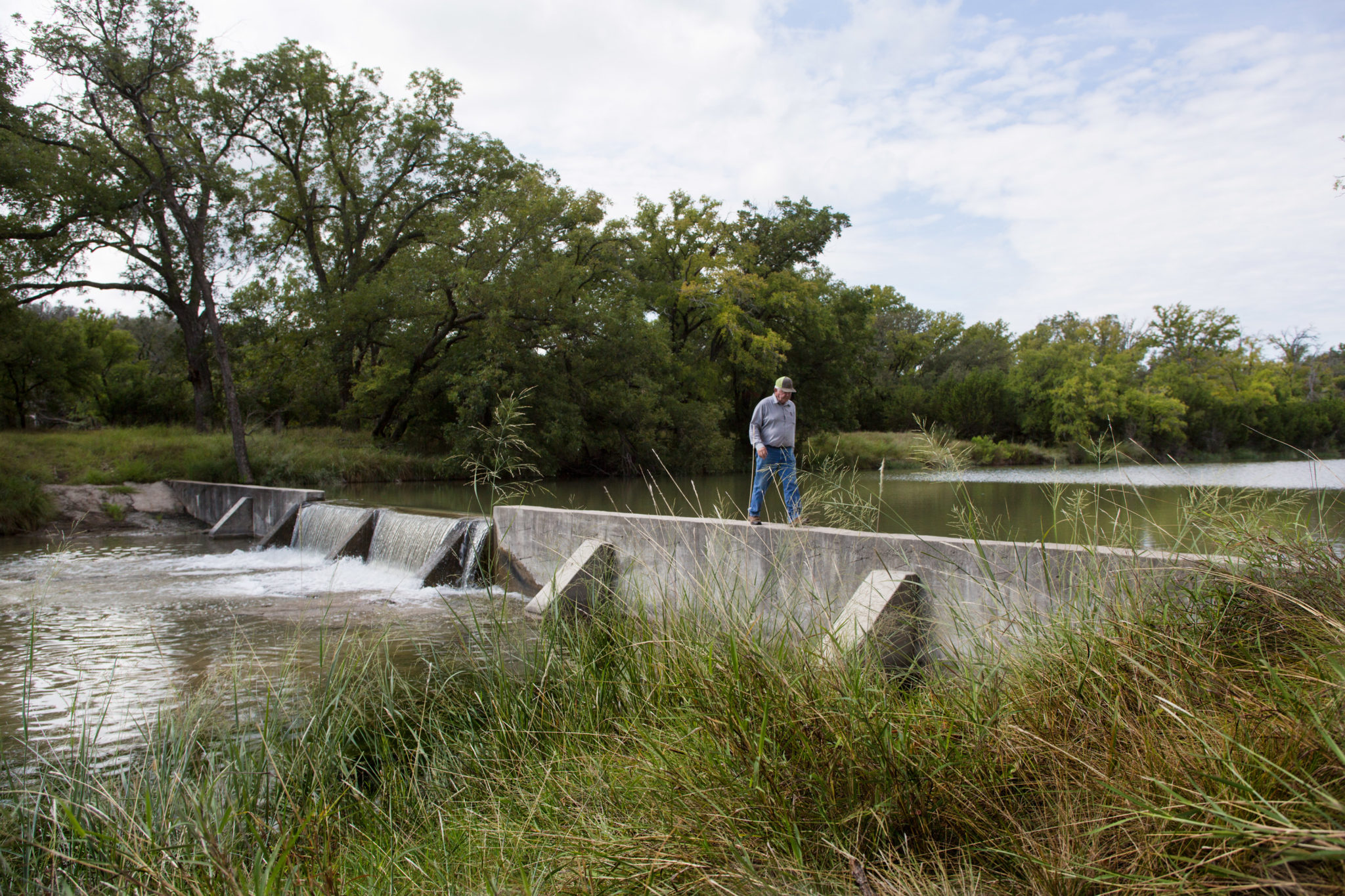
Menard almost looks like a ghost town. A few run-down stores and motels line its main street. The most prominent building in town is the courthouse, which houses the county attorney, district judge and Texas A&M University’s agricultural extension office. Menard County’s dwindling population is now at its lowest since the 1940s at 2,123. The county collects only about $1.4 million in taxes each year, much less than comparably sized counties in West Texas, a result of agricultural property tax exemptions. County Judge Richard Cordes, who personally mows the grass around the courthouse and cleans the public swimming pool, says the county is barely scraping by. Menard, the county seat, is a one-industry town built almost entirely around farming and ranching. Here, there would be no life without water.
“If we lose that water, this county is toast,” said Caroline Runge, manager of the Menard County Underground Water District and the fiercest advocate for the town’s water rights. “We would just dry up and blow away.”
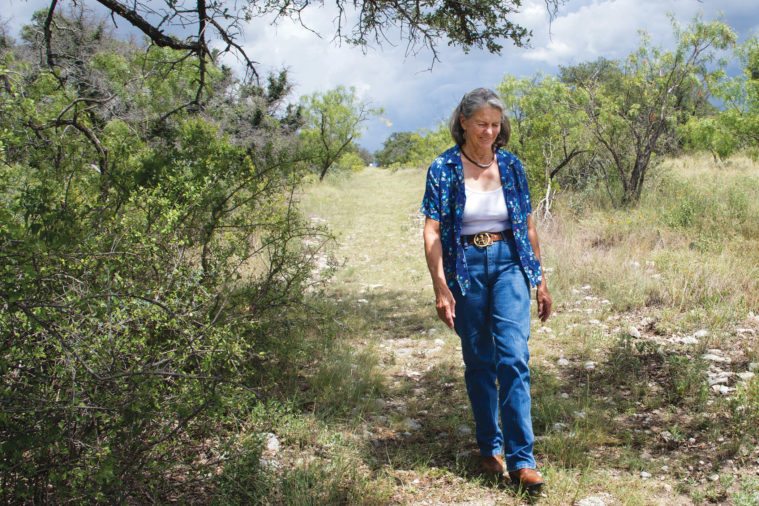
So it’s no wonder that when the river runs dry, Menard farmers, who are struggling to keep their farms watered and livestock alive, don’t appreciate Friends of the San Saba and TCEQ threatening their access to the water.
In Texas, surface water is owned by the state and groundwater is the property of the landowner. The state generally uses a “first in time, first in right” system to decide who gets water first during a drought. At the top of the totem pole are so-called domestic and livestock users who need the water for their homes or animals. Those who have the oldest permits are next. If the river doesn’t reach a landowner with a higher priority, they can call TCEQ and ask the agency to cut off upstream water users.
“If we lose that water, this county is toast. We would just dry up and blow away.”
That’s what Nick Singleton, a Houston petroleum engineer and member of Friends of San Saba, did when the river ran dry in 2013. He planted three small peach trees behind his cabin on his 50-acre property on the river just east of Brady. That cemented his position at the top of the totem pole, giving him more leverage with TCEQ. Now he could ask the agency to shut down irrigation in Menard.
“If that river dries up and I can’t water my peach trees, I have as much of a right as those people [in Menard],” Singleton said. “It doesn’t matter why I [planted the peach trees], pumping this river dry and killing 40 miles of the river is morally wrong.”
In 2011 and again in 2013, TCEQ agreed with Singleton and drastically limited pumping from the river. Overnight, Menard went from being able to draw 22,000 acre-feet of water — enough for close to 200,000 homes for a year — to less than 1,000 acre-feet. During growing season, pecan growers and alfalfa farmers along the river lost a source of water, but some still had shallow wells on their land a couple hundred feet from the river and kept pumping them.
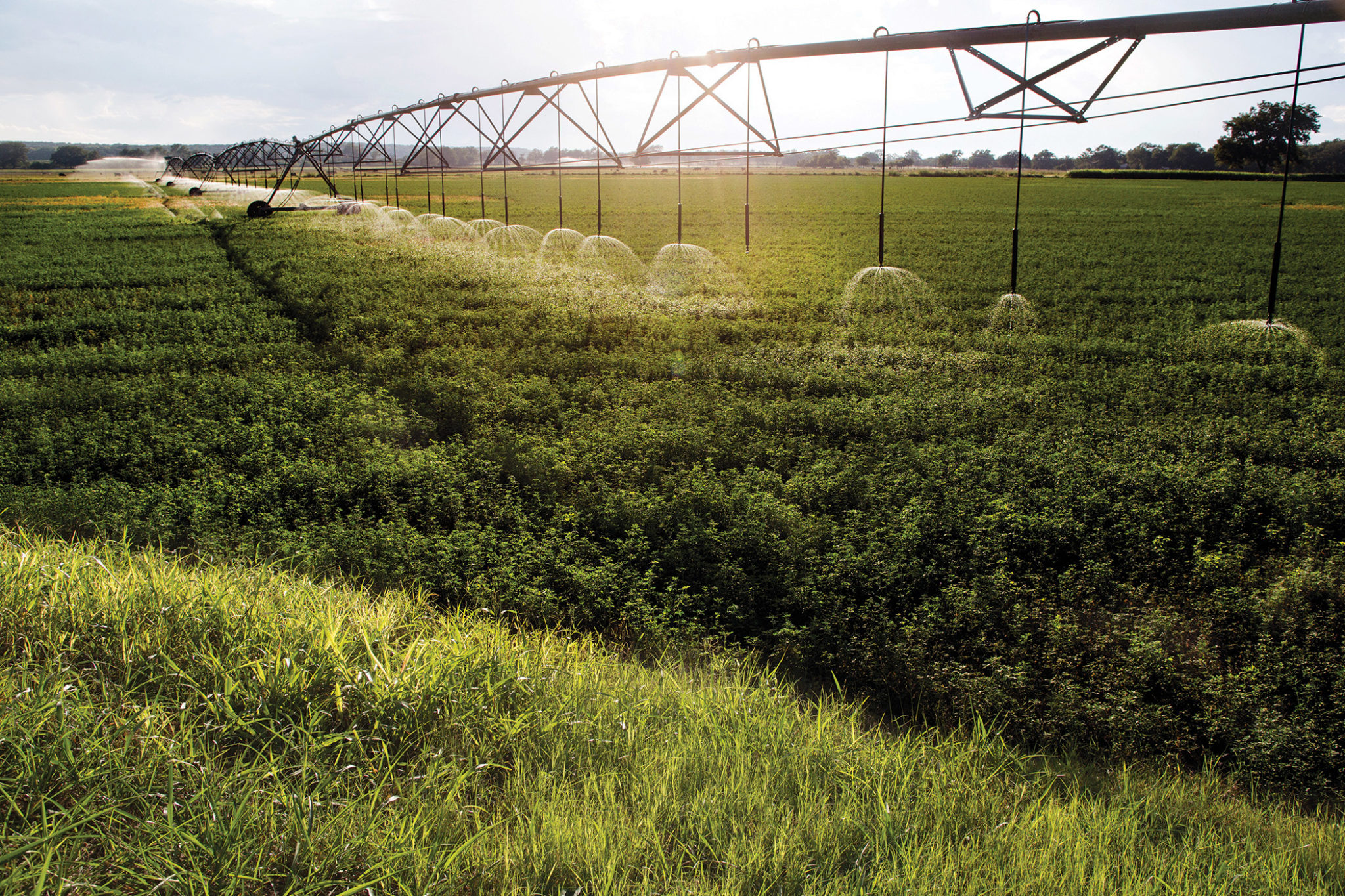
Five complaints were lodged with TCEQ in 2011 charging that the wells — called alluvial wells — were essentially drawing from the river, not groundwater. Pressured by Friends of the San Saba and the dire conditions of the drought, TCEQ went into overdrive trying to investigate. In total, the agency spent about 50 hours that summer interviewing landowners, inspecting wells and studying the river’s underflow, water that pools under the banks of the river. In most cases, they found that the farmers were not breaking the law. But in 2015, TCEQ took another look. This time the agency determined that at least eight wells on three properties were in fact connected to the river and drawing from its underflow.
Among the landowners investigated in 2015 were Richard and Lona Roll and their sons, Tyson and Andrew. The Rolls, whose property abuts Rusty Allen’s, irrigate about 100 acres and have three wells, each about 45 feet deep, a couple hundred yards from the river. In its analysis, TCEQ inspectors measured the decrease in the river’s flow between U.S. Highway 83, upstream of the Rolls’ property, and a point 5 miles downstream of the Rolls’ place. After accounting for evaporation and legal water use between those two points, TCEQ noted that “unexplained losses of water are occurring in the San Saba.” The “shallow alluvium irrigation wells are the most likely factor to account for the remaining losses of water,” they warned the Rolls in a violation notice.

That summer TCEQ also investigated Allen’s property and came to the same conclusion, connecting two of his wells to the river. Katherine and John Kniffen, an elderly couple who own a pecan orchard near the Rolls’ property, were served with a similar violation notice. No fines were issued in the three cases, but the farmers were informed that they were in violation of state law and that they needed to stop using those wells or get a permit.
Menard is a one-industry town built almost entirely around farming and ranching. Here, there would be no life without water.
The Rolls and Rusty Allen say the agency’s analysis is shoddy. Just because the river flow decreases as it passes their property doesn’t mean they are responsible for it, they say. There may be cracks in the riverbed, or the brush, which has grown thicker in the last decade, may be depleting the stream. Rainwater could be pooling under their land, in which case it would technically be groundwater. To settle the debate once and for all, TCEQ could see if there’s a chemical match between the water in the wells and the river, but it hasn’t invested those kinds of resources into its investigations.
“They’ve taken it upon themselves to really target us,” Richard Roll said. “The research and so-called study that they’ve done is very, very poor science. It wouldn’t pass the test for any kind of legitimate study.”
Andrea Morrow, a spokesperson for TCEQ, declined to comment on the Roll investigation, citing the agency’s ongoing enforcement case against the Rolls, but said “alluvial wells in that area impact stream flow.” She also noted that a study of the river and its underflow would be “costly, time-consuming and would provide data of very limited use” and that the agency reached the conclusion that the alluvial wells were drawing from the underflow of the river “[b]ased upon the information available at the time.”
To Quinn, Singleton and other members of Friends of the San Saba, TCEQ’s inaction is worse than the Menard farmers’ use of alluvial wells. If the government has solid evidence of illegal pumping, then why hasn’t it put a stop to it?
In fact, the agency doesn’t appear to see the dry river as a problem under its purview. At a recent public meeting, Amy Settemeyer, a TCEQ official, said the agency is “not required to maintain flow” in the San Saba. But the agency does have the discretion to decide how harshly violators are punished.
A former TCEQ official, who worked as a manager in the water quality division, told the Observer that the agency is very sensitive to political pressures and that the public interest “is very poorly represented” in the agency’s policymaking.
“TCEQ works hard to make sure they do nothing,” said the former official, who requested anonymity because he was not authorized by his current employer to speak to the media. “There’s good people who work hard to make sure nothing happens. It’s not uncommon for fairly detailed investigations to be completed and result in no change.”
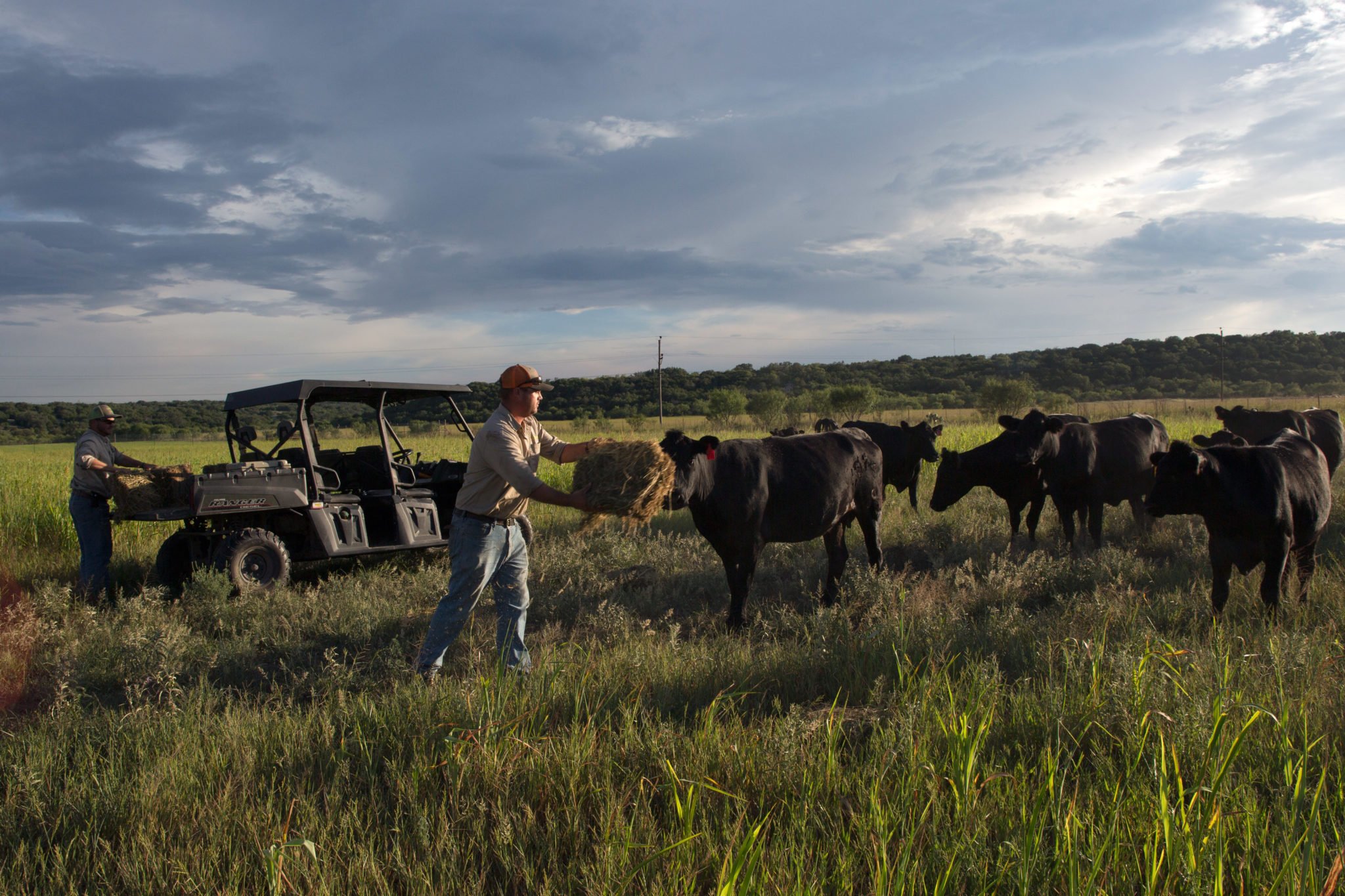
On a recent summer day near Quinn’s ranch, the San Saba held plenty of shin-deep clear water. Rains had been plentiful in 2017 and the tensions between upstream and downstream had cooled for the moment. But Quinn says it’s only a matter of time before the next drought hits and the river runs dry again. There are still dozens of shallow wells close to the river, though it’s unclear how many of them are being used for irrigation. During the next drought, those wells will likely be under scrutiny again.
Though the issue is far from settled, the handful of cases TCEQ has pursued have led to some changes in Menard. Rusty Allen stopped using his wells, so TCEQ would quit “bothering him.” The Kniffens, who own the pecan orchard nearby, bought 10 acre-feet of water rights and attached it to their wells — either a tacit admission that their wells had in fact been drawing from the river or an effort to resolve TCEQ’s claim that they were improperly pumping. The only ones left fighting are the Rolls, who say they’ve already spent tens of thousands of dollars on a lawyer.
In the long run, the Menard farmers may still find themselves facing sanctions on their water use. Two years ago, biologists with the Texas Parks and Wildlife Department found dead fish, rare mussels and turtle shells in the dried-out riverbed during a site visit. If the mussel species present in the San Saba are listed as endangered by the federal government, the state will face additional pressure to protect their habitat. Clint Robertson, a Parks and Wildlife biologist who conducted the site visit, told the Observer that though his agency’s “Kills and Spills Team” seeks compensation for the loss of fish and wildlife, they haven’t done so on the San Saba.
“The problem is trying to figure out who the responsible parties are,” said Robertson. “It’s difficult to pinpoint the responsible party because there are so many pumping.”
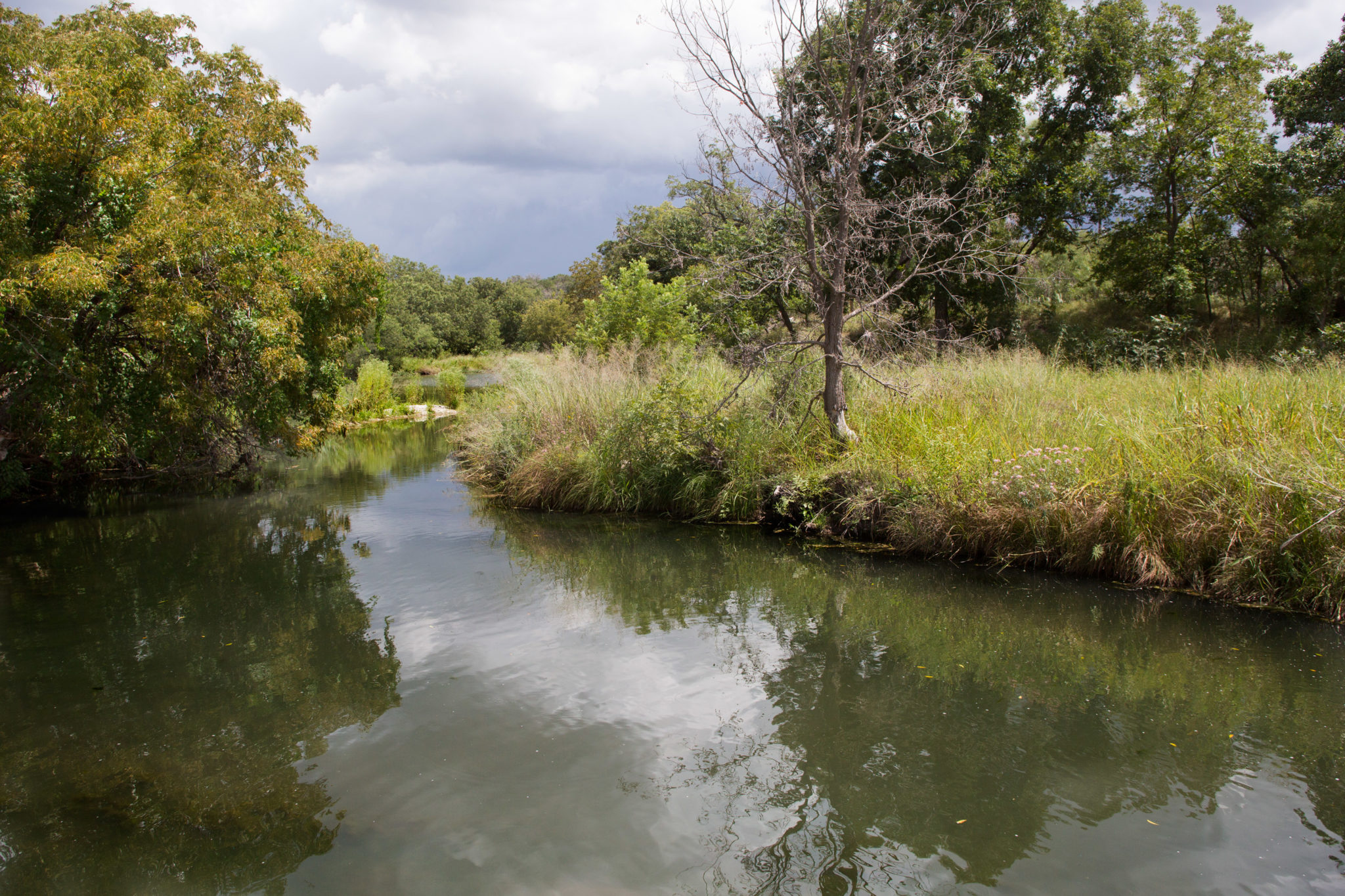
With the two state agencies taking a back seat, Friends of the San Saba is aggressively pushing to shut down the wells in Menard. At a recent meeting on endangered mussel research held by the comptroller’s office, Kinnan Golemon, an attorney for the group, presented for a half-hour. TCEQ had repeatedly documented shallow well use, he said, and Menard irrigators had a history of abusing the water system. He systematically went through TCEQ’s findings year by year since 2000 and concluded that the agency was “two face[d]” on water rights.
Runge, the Menard groundwater district manager, watched the presentation, quietly shaking her head in apparent disbelief. She later told the Observer “there wasn’t a thing [Golemon] said that was true.”
But the audience listened silently to Golemon, his tone becoming fervent with every allegation he lodged against the Menard farmers. “If we’re going to save upstream mussels, there’s got to be some change,” he told them. “We’ve only asked for minimal flow. Establish some minimal flow that will support the ecology that exists and the Friends of the San Saba will go away. But we’re not going to go away as long as we have this kind of record sitting in the state agencies.”
Top image courtesy of Texas Parks and Wildlife Department.
